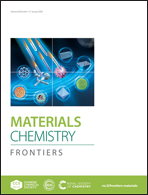Activating the electrode–electrolyte interface via a ZnO@black phosphorus modulation layer for dendrite-free Li metal anodes†
Abstract
Lithium metal is the most promising anode for high energy density batteries. However, lithium dendrite growth resulting from poor interface activity seriously hampers its practical application. An effective method to suppress the Li dendrite growth is to increase the interface activity by enhancing the interface kinetics and reducing lateral Li atom diffusion energy barriers. Herein, ZnO-encapsulated black phosphorus (ZnO@BP) nanosheets are synthesized and utilized as a modulation layer to inhibit the growth of lithium dendrites. The ZnO@BP modulation layer incorporates the P species with moderate electronegativity, which enhances the interface kinetics. This facilitates rapid Li+ desolvation and migration ensuring a uniform Li+ flux. The lithiophilic ZnO contributes to the homogeneous nucleation of lithium and increases the lateral Li atom diffusion rate along the electrode. Consequently, the ZnO@BP coated Li metal anodes exhibit enhanced interface kinetics and outstanding cycle stability in symmetric cells. Furthermore, full cells coupled with LiFePO4 exhibit enhanced rate capacities and cycling stabilities. These results demonstrate the excellent potential of the ZnO@BP modulation layer in activating the electrode–electrolyte interface for stable Li metal anodes, providing opportunities for the application of lithium metal in high energy density devices.



 Please wait while we load your content...
Please wait while we load your content...